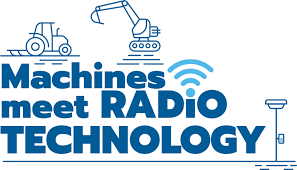How global companies Google, Netflix, Toyota, Asana control their employees
Well-known global companies not only pay attention to the implementation of innovative solutions. Behind the high productivity and strength of organizations lies sophisticated management and a carefully selected workforce. These companies have a lot to learn: they use unique management approaches, and their methods of working with employees attract public attention and bec![]() ome a trend.
ome a trend.
Here is a selection of business giants and their methods of control staff.
Google’s management approached the study and analysis of management thoroughly. The company conducted a large-scale experiment Project Oxygen, during which the importance of managers in the company was revealed. The discovery was the development of a number of questions to identify the worst and best workers and work on optimizing their performance.
In parallel, the company has a dedicated People Analytics team to work with personnel. This is a progressive personnel service that performs the following functions:
– selection and recruitment of the best candidates;
– creation of a system of incentives (rewards), taking into account the working achievements of employees;
– work on unlocking the potential of each employee (corporate training, coaching, crowdsourcing).
Google managers do not control their team at the micro level, but seek to expand its capabilities. Each employee is given the right to control his own work and projects. Without a doubt, feedback is important for productive work, but Google managers are confident that constant intervention in the workflow only reduces employee productivity and causes disruptions in work.
The system for monitoring and managing employee performance is embedded in the following methods:
1. Management by Objectives (OKR) – Objectives and Key Results.
2. Year-end performance review + semi-annual benchmarking.
3. Analysis of employee performance every month, covering coaching, career development, personal achievements.
4. Rewarding employees based on their productivity.
5. Once a year, a survey is conducted with feedback analysis (similar to the “360 degrees” method), multilevel assessment.
6. Employee Engagement Analysis (Googlegeist).
Google does not stop there: methods of personnel management are constantly improving, and traditional approaches to employee control are complemented by new methods and effective solutions.
Netflix
The culture of this company is unique: complete freedom for employees, no rules, no access controls. The staff is selected very carefully: the best of the best work at Netflix, respect, honesty, and involvement are valued. However, Netflix executives are not abandoning radical control methods when preventing mistakes is more important than innovation.
Personnel performance management system:
1. There is no annual employee appraisal. The company is of the opinion that this is a waste of time and meaningless calculations. Instead, a regular 360-degree grading system is encouraged. Initially, the survey was conducted anonymously, then with a signature, now employees are taking it openly.
2. Context, but not control. Each employee has the right to independently make decisions and contact his manager only if he doubts their correctness.
3. People are more important than the process. Employees openly share information, are open and friendly in communication.
4. Creation of a “dream team”: an effective working group, where each member improves and strives to do his job as best as possible.
The company has introduced the A4 feedback model:
– Accept or reject. The Netflix employee gets a lot of decisions and comments. They need to be taken into account, but not all recommendations should be taken as a guide to action. It is the employee’s decision to follow the advice or not.
– Specific actions. In the feedback, the employee should suggest measures to fix the problem, and not just talk about it.
– Do not refuse help. When analyzing teamwork, it is necessary to identify the weak link and make an effort to help the person become better.
– Be grateful for the criticism. When an employee hears remarks addressed to him, he tenses up and instinctively looks for a way to defend himself. The employee is encouraged to overcome the natural reaction of the psyche (to fight back the one who criticizes) and gratefully accept it as a review of his work.

Asana
This small startup has 297 employees and offers them more freedom and choice. All employees undergo life coaching and external mentoring. During the adaptation period, the newcomer is provided with a developed program, the curators of which help him in any matters: from practical implementations to interpersonal relations in the team.
Control system in the company:
1. A culture of transparency. To avoid problems with the “How?” Question, each project starts with a “Why?” Question.
2. Continuous feedback from employees to maintain productivity and increase engagement.
3. Once every six months, work processes are suspended: this time is devoted to the fact that each employee analyzes the dynamics of his work over the past 6 months.
4. At the end of each week, on Fridays, a forum is held where employees share their observations and offer their solutions (recommendations).
5. The company launches annual employee surveys through third parties, uses regular peer review.
6. To improve the performance of staff, individual coaching is carried out: face-to-face meetings between managers and team members.
In comparison with traditional checks, such a system may seem insufficient and non-standard. But the metrics speak for themselves: 99% of Asana’s employees are satisfied in all areas of work, which means that this approach to employee appraisal and control works very well.
Toyota
Control of employees in the company is based on the Japanese philosophy of kaizen. The relationship between employees and management is informal and involves mutual loyalty. Training and adaptation of an employee is carried out in the company on the job.
Basic elements of the kaizen system:
1. Individual discipline. Employees of all structures work with the maintenance of discipline and must constantly work to improve it. This concerns aspects of managing your time, adhering to corporate standards, spending resources, and the quality of performing work tasks.
2. Teamwork. Each employee is part of one team. The work is based on mutual assistance, training, exchange of information, fulfillment of their duties.
3. High morale. Ensuring worker satisfaction is supported by decent working and rest conditions: benefits, social benefits, vacations, material security, benefits (loans, credits, etc.).
4. The ability to vote. Each employee of the company has the opportunity to suggest improvements in working conditions. All responses, without exception, are reviewed by management.
5. Quality groups. The company organizes special groups whose members exchange technologies and ideas. By virtue of constant communication in quality groups, employees objectively assess the overall progress of the team’s work and increase its efficiency.
The German company Siemens also works according to the rules of the system. The main idea of this approach is constant self-improvement, self-control and improvement of the work process. Employees should be able to move away from traditional thinking, strive to fulfill their responsibilities as best as possible, and work for the good of the company. Errors in the work of staff are detected quickly, and the analysis is not of actions, but of the reasons that contribute to the occurrence of violations.
